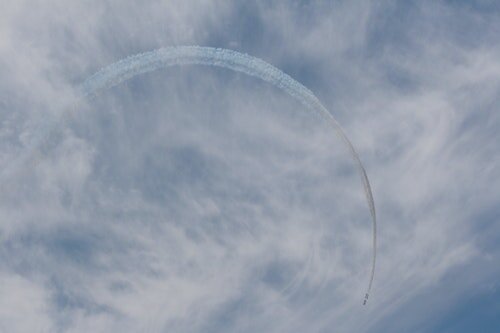Tips from the Pros - July 2012
Apply Professional Acrobatic Skills to Your Safety Practices
Tip provided by Julie ClarkYou might think of flying the professional aerobatic circuit as an extreme sport where pilots fly outrageously fast, 500 feet above a crowd while they perform seemingly outrageous maneuvers and play with G-forces like a yo-yo. One second they are in the middle of an Immelmann maneuver with a slow roll out to a half reverse Cuban eight and the next moment they seem to be plummeting towards earth in a hammerhead stall. It’s almost magic, the aircraft’s movement seems choreographed to the music and pyrotechnics often illuminate the sky. It appears as though such performers are blessed with daring, incredible skills, split second timing and a lot of luck.But there is more to it than just glitz and excitement. The airshow performer’s life depends on the competent combination their pilot skills, their ground crew professionalism, the theatrical choreographers’ and, in Julie Clark’s show, the skills of pyrotechnic technicians. Running the business of a serious aerobatic performer requires so much more than just great flying ability. Julie Clark can attest to these realities. Julie’s insight and experience has earned important recognition such as the; 2007 Woman of the Year, California Senate District 1, 2006 and 2007 Airport Journals “Top 40 Living Legends in Aviation,” Women in Aviation Pioneer Hall of Fame, multiple awards as the “Performer of the Year, recipient of the Art School Memorial Showmanship award, and the Bill Barber Award for Showmanship. Julie was honored in 2008 by the NAA as the recipient of the Katharine and Marjorie Stinson Award which recognizes living woman for an outstanding and enduring contribution, a meritorious flight, or a singular technical development in the field of aviation, aeronautics, space or related sciences. In 2011, Julie was inducted into the ICAS Foundation Air Show Hall of Fame that honors the great aerobatic performers of all time.So what can we “contemporary” aviators learn from a pro like Julie, especially considering the approaching 2012 EAA AirVenture program which creatures the most crowded airspace in America? Let’s see what Julie has to say;“With many folks heading for AirVenture 2012 this summer, I’d like to reflect upon 10 safety tips that have really helped me along the way with respect to safely operating my airshow company, crew, vehicles and airplane, etc. This certainly could be applied to airshow folks, business folks and for attendees all heading to Wittman Field this year in July.”Julie continues, “Of course, personal safety and the safety of my team is paramount, but I must also consider the reputation of my sponsors. I have yet to meet the aviation sponsor who is not a strong proponent of safety. When I personally reviewed these ten tenets of safety, I realize they could apply to anyone running most any kind of business. They certainly mirror my beliefs and have helped me advance in the business. If one prefers a shortlist, think about infusing these ten points into two guiding principles: “Do it safely, or not at all” and “There is always time to do it right.” These principles are base beliefs to both a global company, and anyone running any size of company, or just the folk who might be converging on an aviation site – for the biggest aviation event in the world, held for one week.”Take a look at the list Julie provided. Most would agree that considering these well thought out points will place on the correct side of the “safety power curve.” Here are those reminders, and as read back one, think about how it can apply to you!
- Always operate within design and environmental limits.
- Always operate in a safe and controlled condition.
- Always ensure safety devices are in place and functioning.
- Always follow safe work practices and procedures.
- Always meet or exceed customers’ requirements.
- Always maintain integrity of dedicated systems.
- Always comply with all applicable rules and regulations.
- Always address abnormal conditions.
- Always follow written procedures for high risk or unusual situations.
- 10. Always involve the right people in decisions that affect procedures and equipment.
Julie concludes, “Recognize that flying is the ultimate management of risk, and following the safety suggestions I personally use prior to every performance will help you move that risk factor down to zero. Fly often, be safe and most of all, have fun!”

